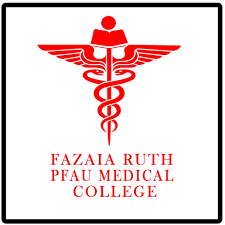

Academic Researcher
Journal of Basic and Clinical Sciences
Volume 02, Issue 01, 2025
An Official Journal of Fazaia Ruth Pfau Medical College, Air University
ISSN: 3008-0495 (Online)
ISSN: 3008-0487 (Print)
Stress and its Correlates among Medical Students in Gambat Medical College
Vineet Kumar, Tehreem Fatima, Usama Ahmed, Sandhya Khemani, Sajal Jalbani, Kahif Noor , Areesha Iqbal, Muhammad A. Memon
Acad Res. 2024, 1 (1): 21-28
DOI: https://doi.org/10.70349/ar.v1i1.7
Abstract
Background: The immense workload on undergraduate medical students may cause favorable
or unfavorable stress, leading to positive or negative consequences. This study was designed to
determine the frequency of stress, anxiety, and depression among the undergraduate students of
Gambat Medical College.
Methodology: 300 students from various academic years, from the first to the final year of
MBBS, were selected from Gambat Medical College, Khairpur, following inclusion and
exclusion criteria. The Perceived Stress Scale Questionnaire-10 (PSSQ-10), a widely used tool
for measuring perceived stress, was utilized to gather data. Stress levels were categorized as low
(0-13), moderate (14-26), or high (27-40). Data Analysis was done using SPSS. Percentage,
mean, and standard deviation of stress levels were calculated and compared across different
academic years.
Results: Out of 300 MBBS students, 60 (20%) were from each year, that is, first, second, third,
fourth, and final year. Females were 100 (33.33), and males were 200 (66.66). The demographic
profile showed 4 (1.33%) students were married (all males). The average age of participants was
21.05 years. 109 (36.22%) students had low stress, 171 (56.9%) had moderate, and 20 (6.65%)
had high stress. Overall 41.5% males and 25% females had low stress, 44.5% of males had
moderate stress compared to 62% of females. High stress was observed in 3.5% of males
compared to 13% of females, three times higher than in males. Significant variations were
observed in the second year (p = 0.053), third year (p = 0.007), and fourth year (p = 0.055),
implying that gender impacts stress levels during those academic years. Conversely, no
significant distinctions were observed in the first and fifth years (p = 0.929 and 0.329,
respectively).
Conclusion: The data analysis found that students from all academic years reported moderate
stress levels. Female students reported considerably greater stress levels than male counterparts,
with a pronounced difference (p =0.00066). These findings underscore the need for gender
specific interventions to address stress among medical students, which could potentially improve
their mental health and academic performance.
Keywords
Educational achievements, stress in medical students, anxiety, mental health.








